Baseboard moldings are a popular choice for adding a touch of elegance and sophistication to any home. They can transform a plain room into a stylish living space with minimal effort. However, installing baseboard moldings requires precision and attention to detail, especially when it comes to joining them together seamlessly. Scarf joints are a common technique used by carpenters to join baseboard moldings, allowing for smooth transitions between pieces without any visible seams or gaps.
As an experienced carpenter, I have learned the importance of mastering scarf joints when it comes to baseboard moldings. Whether you’re a DIY enthusiast or a professional carpenter, this article will guide you through the process of joining baseboard moldings with scarf joints. By following these steps, you’ll be able to achieve seamless results that will enhance the overall look and feel of your home’s interior design. Let’s dive into the world of woodworking and learn how to create elegant and durable baseboard molding installations with scarf joints.
Tools And Materials Needed For Scarf Joints
Proper tools and materials are essential when it comes to joining baseboard moldings with scarf joints. It is crucial to have the right equipment to make precise cuts and ensure a seamless finish. Some of the necessary tools include a compound miter saw, clamps, wood glue, and a measuring tape. The materials you will need for your scarf joint include two pieces of baseboard molding, sandpaper or a wood file, and a pencil or marker.
Choosing proper materials is vital when creating scarf joints that last. You should select high-quality baseboard molding made from hardwoods like oak or maple rather than cheaper alternatives like pine. Hardwood baseboards are more durable and can withstand wear and tear without splintering or chipping easily. Additionally, make sure the two pieces of molding you plan to join are identical in size and shape for optimal results.
Tips for efficient measuring and cutting involve taking accurate measurements before making any cuts. Use your measuring tape to determine the length of each piece you need for your baseboard molding joint carefully. Once you have your measurements, use your compound miter saw to create precise 45-degree angles on both ends of each piece of molding. Remember that precision is key when making scarf joints because even slight inaccuracies can lead to unsightly gaps in the finished product.
With proper tools, high-quality materials, accurate measurements, and precise cutting techniques, you can successfully join baseboard moldings using scarf joints. In the next section, we will discuss how to measure and cut your baseboard moldings correctly for optimal results.
Measuring And Cutting The Baseboard Moldings
To properly join baseboard moldings with scarf joints, it is essential to start by measuring and cutting the moldings accurately. The first step in this process is measuring accuracy, which ensures that all the baseboard moldings are of uniform length and height. One way to do this is by using a tape measure and marking the measurements on the moldings before cutting.
Cutting techniques also play a crucial role in achieving seamless baseboard molding joints. It’s important to use a miter saw or a power miter box to ensure precise cuts at 45-degree angles. These tools allow for straight, clean cuts that fit snugly together, creating a seamless joint.
When measuring and cutting baseboard moldings, there are some key considerations to keep in mind. Here are four tips for achieving precision:
- Use clamps or stop blocks to hold the molding securely in place while cutting.
- Check your measurements twice before making any cuts.
- Make sure your saw blade is sharp and free of debris for clean cuts.
- Take your time – rushing through these steps can lead to mistakes that could compromise the final result.
With these tips in mind, you’ll be well on your way to creating perfectly measured and cut baseboard moldings that will seamlessly join together with scarf joints. In the next section, we’ll take a closer look at preparing the scarf joint angles for optimal results.
Preparing The Scarf Joint Angles
To prepare the scarf joint angles for joining baseboard moldings, it is essential to start with accurate measurement of the angles. Use a protractor to measure the angle of the wall and transfer that angle onto the molding. Take care to ensure that the baseboard molding sits flush against the wall, as this will guarantee a tight fit.
Next, use a cutting technique that ensures precision and accuracy when cutting the molding at an angle. One reliable method is to use a miter saw with an adjustable blade. Set the saw at the correct angle and carefully cut through each piece of molding. Remember to cut each end in opposite directions so that they align correctly when joined.
After making all necessary cuts, it is time to sand down any rough edges or imperfections on each piece of molding. This step helps ensure that the pieces fit together tightly without gaps or unevenness. With precise angles and smooth edges, creating a seam-less join for your baseboard moldings becomes much easier.
Now that we have prepared our scarf joint angles with precise measurement and cutting techniques, it’s time to move on to creating templates for our scarf joints. This can be done by tracing one half of each angled joint onto paper, then folding it over onto itself to create a mirror image of the pattern. With these templates in hand, we are ready to begin assembling our baseboard moldings with clean and seamless joins using our scarf joint technique.
Creating The Scarf Joint Templates
Before moving on to the next step of scarf joint installation, it is important to understand the benefits that come with using this type of joint. Scarf joints are known for their strength and durability, making them a popular choice for baseboard moldings. They allow for longer lengths of wood to be used without compromising stability, while also providing a seamless transition between two pieces.
While scarf joints offer many advantages, there are alternative methods for joining baseboard moldings such as butt joints or mitered joints. However, these joints do not provide the same level of strength and support that scarf joints do. Butt joints can leave visible seams and weak points in the molding, while mitered joints may not fit perfectly due to variations in angles.
Now that the angles have been prepared and templates created, it’s time to move onto cutting the scarf joints with a table saw. This process requires precision and attention to detail in order to achieve a perfect fit. By following proper techniques and taking necessary safety precautions, even those new to carpentry can successfully complete this step in creating strong and seamless baseboard moldings.
Cutting The Scarf Joints With A Table Saw
To cut the scarf joints with a table saw, it is important to ensure that the scarf joint alignment is precise. This can be achieved by carefully measuring and marking the baseboard moldings before cutting. Additionally, it is important to use a high-quality blade that can make clean cuts through the wood without causing any splintering or tear-out.
When making the cuts, it is recommended to use a miter gauge to guide the baseboard moldings through the saw blade. This will help to keep the cut straight and prevent any inaccuracies or mistakes. It is also important to make sure that the blade height is set correctly so that it cuts all the way through the wood without leaving any marks or gaps.
While using a table saw is one of the most popular methods for cutting scarf joints in baseboard moldings, there are alternative cutting methods available as well. These include using a handheld circular saw or a router with a special bit designed for making scarf joints. Ultimately, choosing which method to use will depend on personal preference and experience with each tool. Regardless of which method is chosen, taking care to ensure precise alignment and clean cuts will result in strong and seamless joints between baseboard moldings.
As we move forward with this project, our next step would involve sanding down the scarf joints so they are smooth and even with no rough edges. This ensures that when we apply paint or stain to our baseboards, they look professional and seamless rather than uneven or jagged. We’ll explore sanding techniques in more detail in our subsequent section on finishing touches for our baseboard moldings project.
Sanding The Scarf Joints
After the scarf joints have been created, the next step is to sand them down for a smoother finish. This process is crucial as it helps to remove any rough spots or inconsistencies in the joint. The importance of precision cannot be overstated when sanding down the scarf joints. A slight deviation from the required angle or length can result in gaps that affect the quality of the final product.
When sanding down the scarf joints, choosing the right sandpaper grit is essential. Depending on how rough or smooth you want your finish to be, you will need to select a grit that matches your desired outcome. For most baseboard moldings, a 120-grit sandpaper is ideal for removing rough spots and creating a smooth finish. However, if you are working with delicate materials such as pine or cedar wood, a higher grit sandpaper may be necessary.
To ensure that your scarf joints are sanded correctly and evenly, use light pressure when sanding and always follow the grain of the wood. Sand each joint thoroughly until it is smooth and flush with the rest of the molding. Taking your time with this process will guarantee that your finished baseboard molding looks professional and polished.
- Achieving a perfectly smooth finish can evoke feelings of satisfaction and accomplishment.
- Knowing you have put in effort to create something beautiful can give you a sense of pride.
- A well-sanded baseboard molding can add value to your home, making it feel more welcoming and elegant.
- The feeling of having accomplished something challenging but rewarding can motivate one to take on more complex carpentry projects.
With your scarf joints now sanded down smoothly, it’s time to move onto fitting them together seamlessly.
Fitting The Scarf Joints Together
An essential aspect of creating baseboard moldings with scarf joints is ensuring proper alignment. Scarf joint alignment is crucial to achieve a seamless look and maintain the structural integrity of the boards. One effective technique to ensure proper alignment is to use a clamp with pressure pads on the ends of the boards.
Once the scarf joints are fitted together, it’s time to focus on finishing techniques. Sanding is an excellent way to smooth out any rough edges or uneven surfaces that may have occurred during cutting. It’s important to sand evenly across all surfaces and edges to ensure consistency in appearance. Additionally, using wood filler can be helpful in filling any gaps or imperfections in the joint lines before painting or staining.
To emphasize the importance of proper alignment and finishing techniques, refer to this table:
| Technique | Benefit |
|---|---|
| Clamp with pressure pads | Ensures accurate alignment |
| Sanding | Smooths out rough edges and surfaces |
| Wood filler | Fills gaps and imperfections |
Applying wood glue to the scarf joints is the next step in creating baseboard moldings. The glue should be spread evenly along both sides of each joint, ensuring complete coverage. Once applied, gently press the boards together, using a clamp if necessary, until the glue dries completely. This step is crucial for maintaining a strong and durable bond between the two pieces of wood. With these steps completed correctly, you’ll have successfully created beautiful baseboard moldings with scarf joints that will last for years to come.
Applying Wood Glue To The Scarf Joints
- When using wood glue to join baseboard moldings with scarf joints, it is important to ensure the glue is of the highest quality.
- The joint should be carefully prepared prior to the application of glue, as this will ensure a strong and secure bond.
- The surface of the joint should be clean and dry, and all excess dust should be removed.
- The wood glue should be applied to the entire area of the joint, ensuring that the surfaces to be bonded are fully covered.
- Once the glue is applied, the joint should be clamped together and left to dry.
- Clamping will help to ensure the joint is firmly and securely bonded, and that the joint will be as strong as possible.
Preparing The Wood Glue
As a carpenter, one of the most important aspects of joining baseboard moldings with scarf joints is to ensure that the wood glue is properly prepared. This step can make or break the joint and determine how strong it will be over time. Proper mixing techniques are vital in preparing the glue for application.
To begin, it’s important to follow the instructions on the packaging when it comes to mixing ratios. Too much water or too little glue can affect drying time and overall strength of the joint. Use a clean container and stir thoroughly until there are no lumps left in the mixture. It’s also helpful to let the mixed glue sit for about five minutes before applying it to allow any air bubbles to escape.
Drying time is another crucial factor when it comes to preparing wood glue for scarf joints. Depending on temperature and humidity, drying time can vary, but typically ranges from 30 minutes to an hour before clamping should occur. It’s important not to rush this step, as allowing adequate drying time ensures a strong joint that will last for years to come. By following proper mixing techniques and being patient with drying times, you can be confident in the strength of your scarf joints.
Applying The Glue To The Joint
Properly applying wood glue to the scarf joint is an essential step in creating a strong and durable joint. As a carpenter, it’s important to have techniques that ensure the glue is applied evenly and without excess. One tip for avoiding excess glue in the joint is to use a brush or roller to apply the glue rather than pouring it directly onto the wood. This technique allows for better control over how much glue is used, preventing any overflow into other areas of the molding.
Another technique for applying glue evenly to the joint is to use a small scraper or putty knife to spread the glue in a thin layer on both sides of the joint. This ensures that there are no gaps or air pockets between the two pieces of wood, which can weaken the joint over time. It’s also important to make sure that there is enough glue applied so that there is full coverage on both sides of the joint.
After applying the glue, gently clamp together both pieces of wood and wipe away any excess with a damp cloth before allowing it to dry completely. By following these tips for applying wood glue evenly and without excess, you can ensure a strong and long-lasting scarf joint that will stand up against wear and tear over time.
Clamping For Drying
The application of wood glue is a crucial step in creating a strong and durable scarf joint. However, it is not enough to just apply the glue evenly and without excess. Proper clamping during the drying process is also essential to ensure that the joint stays intact over time. Clamping helps to hold both pieces of wood together while the glue dries, creating a bond that is stronger than the wood itself.
While clamping may seem like an obvious step, there are alternatives to consider if traditional clamps are not available or suitable for your project. One option is to use heavy objects such as books or bricks to apply pressure to the joint. Another alternative is to use specialized clamps designed specifically for scarf joints. These clamps have a unique shape that allows them to securely grip both pieces of wood at an angle, providing even pressure across the entire joint.
Regardless of which method you choose, it’s important to allow sufficient time for the glue to dry completely before removing the clamps. The drying time will depend on various factors such as humidity levels and temperature, but it typically takes at least 24 hours for the glue to fully cure. Rushing this process can result in a weak joint that will eventually fail over time, so patience during this step is critical.
In conclusion, proper clamping during the drying process is just as important as applying wood glue evenly when creating a scarf joint. While traditional clamps are a reliable choice, there are alternatives available if necessary. Additionally, allowing sufficient drying time before removing the clamps ensures that the joint will be strong and long-lasting. By following these tips and techniques, carpenters can create high-quality scarf joints that will stand up against wear and tear over time.
Clamping The Scarf Joints
Clamping the Scarf Joints:
Clamping is an essential step in joining baseboard moldings with scarf joints. This step ensures that the joints are tightly secured, preventing them from separating under normal usage. To achieve a successful joint, it is crucial to have a good clamping technique.
There are several clamping techniques that one can use when joining baseboard moldings with scarf joints. One of the most common methods involves using a bar clamp or a pipe clamp to hold the two pieces together. It is important to apply even pressure on both sides of the joint to prevent any warping or bending. Another technique involves using spring clamps, which are useful for holding small pieces together. However, when using spring clamps, ensure that there is enough pressure to hold the joint securely.
One of the common mistakes people make when clamping their scarf joints is over-tightening them. Over-tightening can lead to uneven pressure on both sides of the joint and cause it to warp or bend. On the other hand, under-tightening can result in gaps between the two pieces, leading to weak joints. Therefore, it is important to find a balance between applying enough pressure while avoiding over-tightening.
Allowing the glue to dry:
After successfully clamping your scarf joints, you must allow adequate time for the glue to dry before removing the clamps. The amount of time needed depends on various factors such as humidity and temperature, but generally speaking, 24 hours should be sufficient for most glues. Remember not to rush this critical step as removing clamps prematurely may result in weak and unstable joints.
In conclusion, proper clamping technique plays a vital role in creating strong and reliable scarf joints between baseboard moldings. While there are different methods available for clamping these types of joints, it’s essential always to avoid common mistakes such as over-tightening or under-tightening them. Once you have successfully clamped your joints, allow adequate time for the glue to dry.
Allowing The Glue To Dry
After clamping the scarf joints, the next step is to allow the glue to dry completely. It is essential to give enough time for the glue to set and harden before proceeding with the installation process. Rushing this step may cause the joint to loosen or break apart, leading to a poorly finished project.
Here are some tips for speeding up the drying process:
- Increase airflow by using a fan or opening windows.
- Use a dehumidifier in humid weather conditions.
- Apply heat using a space heater or hairdryer (set on low heat).
- Choose fast-drying glue products that can reduce drying time considerably.
While waiting for the glue to dry, it is crucial to handle the moldings properly. Avoid touching them as much as possible, especially near the joint area, as this can affect their alignment and lead to an uneven finish. If you need to move them, handle them gently, and use caution not to put pressure on the jointed area.
Transition into subsequent section: Once you’ve allowed sufficient drying time for your baseboard moldings with scarf joints, it’s time to move on to sanding down any rough edges and ensuring proper fitment of each piece.
Sanding The Scarf Joint Seam
- A successful scarf joint requires the use of specialized sanding tools to ensure a smooth, even finish.
- Sandpaper grits of 80 to 120 are generally used for the best results.
- Sanding the joint in an ‘X’ pattern is both effective and efficient.
- Hand sanding can be used to ensure the joint is fully and evenly sanded.
- Electric sanders should be used with caution to avoid gouging the wood.
- A light touch and multiple passes with the sandpaper are essential for a perfect scarf joint.
Sanding Tools
As a carpenter, the satisfaction of seeing two pieces of baseboard molding perfectly aligned is second to none. However, accomplishing this feat requires more than just skillful cutting and measurement. It also involves sanding the scarf joint seam until it becomes invisible to the naked eye.
To achieve a smooth and seamless finish on your baseboard moldings, you need the right sanding tools. Sandpaper grit is an essential aspect when choosing sanding tools. Using coarse-grit sandpapers can cause damage to the wood and leave visible marks on your workpiece. On the other hand, using fine-grit sandpapers will not be effective in removing rough edges from your workpiece. The best approach is to start with a medium-grit sandpaper between 100 and 150 grit then switch to a finer grit like 220 or 320 for a smoother finish.
In addition to choosing the right sandpaper grit, handheld sanders are also critical in achieving an even finish on your baseboard moldings. A palm sander is excellent for light-duty tasks while an orbital sander can handle more demanding tasks like smoothing out large surfaces. Always ensure that you use appropriate pressure when sanding with handheld tools to avoid leaving uneven marks on your moldings. With these tips, you can achieve a flawless finish on your baseboard moldings and create stunning interiors that will leave your clients impressed.
Sandpaper Grits
When it comes to creating a smooth and seamless finish on baseboard moldings, sanding the scarf joint seam is necessary. However, achieving this requires more than just skillful cutting and measurement. Choosing appropriate sandpaper grits is also crucial in achieving the desired result. Using coarse-grit sandpapers can damage the wood and leave visible marks on your workpiece. On the other hand, using fine-grit sandpapers will not effectively remove rough edges from your workpiece.
To ensure an even finish on your baseboard moldings, starting with a medium-grit sandpaper between 100 and 150 grit is recommended before switching to a finer grit like 220 or 320 for a smoother finish. This technique allows for thorough removal of rough edges while avoiding damage to the wood surface. Moreover, when selecting sandpaper grits for your task, consider the type of wood you are working with as some types may require coarser or finer-grit sandpapers.
In addition to choosing appropriate sandpaper grits, utilizing handheld sanders is also critical in achieving an even finish on baseboard moldings. A palm sander is excellent for light-duty tasks while an orbital sander can handle more demanding tasks like smoothing out large surfaces. It is essential to apply appropriate pressure when using handheld tools to avoid leaving uneven marks on your moldings. By employing these techniques for sanding baseboard moldings with scarf joints, you can achieve a flawless finish that will impress your clients.
Sanding Techniques
When it comes to creating seamless baseboard moldings, sanding the scarf joint seam is a crucial step. Achieving a smooth finish requires skillful techniques, such as choosing appropriate sandpaper grits and utilizing handheld sanders. Choosing the right sandpaper grits can make all the difference in achieving an even finish on your moldings.
To ensure you choose the right sandpaper grits, consider the type of wood you are working with. Some woods may require coarser or finer-grit sandpapers than others. Generally, starting with a medium-grit sandpaper between 100 and 150 grit is recommended before switching to a finer grit like 220 or 320 for a smoother finish. This technique allows for thorough removal of rough edges while avoiding damage to the wood surface.
Another important aspect when it comes to sanding baseboard moldings with scarf joints is utilizing handheld sanders safely and effectively. When using handheld tools, it is essential to apply appropriate pressure to avoid leaving uneven marks on your workpiece. Additionally, wearing safety gear such as goggles and ear protection can help prevent accidental injuries while operating these tools. By employing these techniques for sanding baseboard moldings with scarf joints and taking safety precautions, carpenters can achieve flawless finishes that will impress their clients.
Filling Any Gaps Or Holes In The Seam
Picture this: you’ve successfully joined your baseboard moldings using a scarf joint, but the seam is not yet perfect. There are gaps and holes that need to be filled before you can call it a job well done. Luckily, there are techniques for smoothing out those imperfections and painting over them seamlessly.
Before we get to painting, it’s important to fill any gaps or holes in the seam. This can be accomplished using wood filler, which comes in various shades to match the color of your baseboard molding. Simply apply the filler with a putty knife, making sure to press it firmly into any crevices or voids. Once dry, sand down any excess filler until it’s flush with the surrounding surface.
Matching filler colors is crucial to achieving a seamless finish. If the color doesn’t match perfectly, even the smallest gap will stand out like a sore thumb once painted over. To ensure a good match, take a small sample of your baseboard molding to your local hardware store and compare it with different shades of wood filler until you find one that blends in seamlessly.
Now that we’ve filled any gaps and matched our filler color perfectly, we’re ready to move on to applying a finishing touch to the scarf joint seam. With these techniques for smoothing and painting over imperfections mastered, you’ll have an expertly crafted baseboard molding installation that will add value and beauty to any room in which they’re installed.
Applying A Finishing Touch To The Scarf Joint Seam
To achieve a seamless look for your baseboard moldings, it is important to learn how to join them with scarf joints. Once you have filled any gaps or holes in the seam, your next step is to apply a finishing touch to the joint. This will entail concealing the joint with decorative trim and applying paint or stain to the seam.
When applying paint or stain to the seam, it is important to ensure that it blends seamlessly with the rest of the molding. To achieve this, use a paintbrush or roller and apply thin coats until you reach your desired finish. You can also use wood filler or putty to conceal any remaining gaps before painting or staining.
Lastly, once you have applied paint or stain and concealed any remaining gaps, you can now conceal the joint with decorative trim. This not only adds aesthetic value but also provides additional support for your baseboard moldings. With these steps done correctly, you will have achieved a seamless transition between your baseboard moldings and a professional-looking finish that complements your home’s interior design.
As you move on to installing the baseboard moldings with scarf joints, keep in mind that precision and attention to detail are key in achieving a seamless look. The process may be time-consuming but will ultimately produce beautiful results that are worth every effort put into it.
Installing The Baseboard Moldings With Scarf Joints
When it comes to installing baseboard moldings, there are various types of baseboard moldings to choose from. Each type has its unique features and advantages. For example, some are more ornate and detailed, while others are simpler in design. Ultimately, the choice depends on your personal preference and the style of your home.
One of the most crucial aspects of installing baseboard moldings is joining them with scarf joints. Scarf joints are an excellent way to connect two pieces of molding without needing any special tools or equipment. The benefits of using scarf joints include having a seamless joint that is stronger than other types of joints. Additionally, they give a professional look to your finished product.
In summary, when installing baseboard moldings, it is essential to consider the different types available and choose one that complements your home’s style. Furthermore, using scarf joints provides many benefits over other joint options, making it an ideal option for carpenters looking for durable and aesthetically pleasing results. In the next section, we will discuss troubleshooting common issues that arise when using scarf joints in baseboard molding installation projects.
Troubleshooting Common Issues With Scarf Joints
After installing the baseboard moldings with scarf joints, it’s essential to check for any common issues that might arise during or after the installation process. One of the most common problems is gapping between joints, which can occur due to a lack of precision in measuring and cutting the molding. This issue can be easily solved by using wood filler or a caulking gun to fill in any gaps.
Another common problem that you might encounter with scarf joints is splitting of the wood. This issue usually occurs when too much force is applied during nailing or when using nails that are too long. To prevent this from happening, ensure that your nail lengths are shorter than the thickness of the molding and use a nail punch to drive them in gently. If you still experience splitting, try pre-drilling holes before nailing.
If you’re having trouble with scarf joints, there are alternative methods for joining baseboard moldings that you can explore. One such method is using coped joints instead. Coped joints involve cutting one side of the molding at an angle and then fitting it around the other side, creating a flush finish that doesn’t require any additional filler. Another option is using mitered joints, where both pieces of molding are cut at an angle and joined together at a 45-degree angle.
In summary, it’s crucial to identify and address any common issues that may arise with scarf joints when installing baseboard moldings. Preventative measures include precise measurements, careful nailing techniques, and proper use of tools such as nail punches. If issues persist despite these efforts, alternative methods like coped or mitered joints may be worth considering as viable options for joining baseboard moldings without encountering issues like gapping or splitting.
Conclusion
In conclusion, mastering the art of joining baseboard moldings with scarf joints is an essential skill for any carpenter. With the right tools and materials, precise measurements, and careful attention to detail, creating a seamless joint can elevate the look of any room. Like a master craftsman sculpting a piece of wood into a work of art, the carpenter must carefully craft each angle of the scarf joint to ensure a snug fit. The result is a smooth and polished seam that seamlessly blends into the overall design.
But even the most skilled carpenters encounter challenges when working with scarf joints. From gaps in the seam to uneven angles, troubleshooting common issues requires patience and problem-solving skills. Like navigating rough waters on a ship at sea, the carpenter must remain focused and adaptable in order to achieve success. Ultimately, by following these steps and honing your craft over time, you can join baseboard moldings with scarf joints like a true carpentry expert – creating beautiful spaces that stand the test of time.
Image Credits

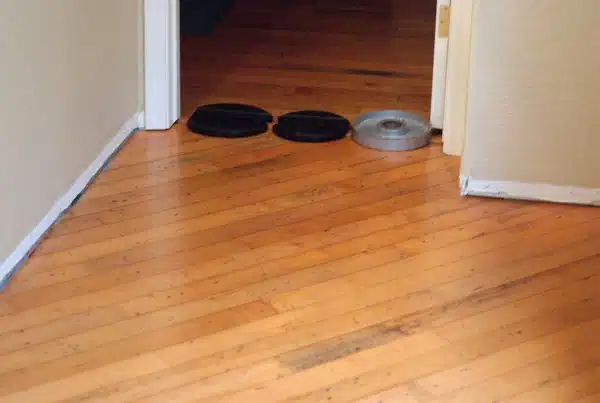
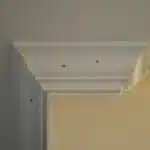




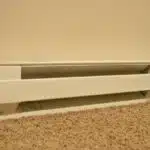
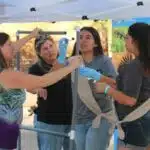

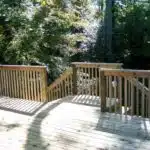

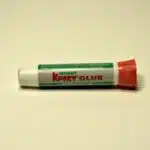
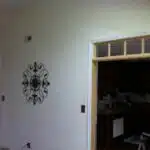

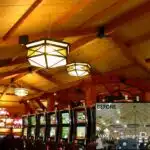

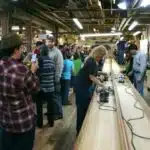


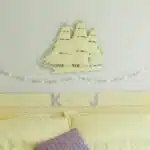
![How To Repair Rotted Wood 21 Texture : Altario Buick Estate Wagon : Rotting Faux Wood Paneling [1 of 2]](https://green-life.blog/wp-content/uploads/2023/05/z1CersK-gCjq-150x150.jpg.webp)







